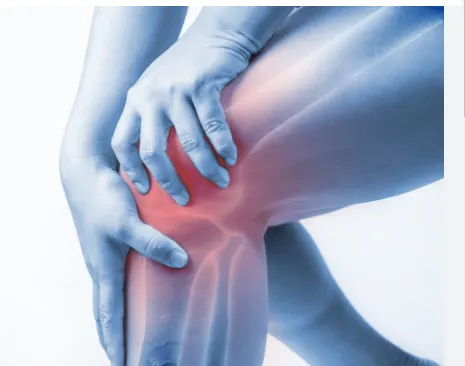Swollen joints happen when there is fluid in the tissues around the joints. It can be very uncomfortable and can make it difficult to move the affected joints. In some cases, swelling may cause affected joints to increase in size or appear to be an odd shape.
Joint pain and swelling can affect more than one joint at a time. The most common joints to be affected by pain and swelling are elbows, wrists, shoulders, the base of the spine, knuckles in the hand, hips, knees or ankles.
There are 2 types of joint pain and swelling. Acute joint pain and swelling comes on quickly and lasts a short time, for example, if you have an injury. Chronic joint pain and swelling comes on slowly and causes long-term problems. This is more likely to be caused by an underlying condition, such as a type of arthritis.
The symptoms of joint pain and swelling can vary, and depend on which joints are affected. The pain and swelling are often accompanied by stiffness, aches and a feeling of heat or warmth.
In some cases, it can lead to problems moving around, carrying out daily activities (such as washing and dressing), and for some people, working.
Joint pain and swelling may be better or worse at different times of the day. For example, you may find that your joint pain and swelling is worse first thing in the morning. Pain and swelling in the joints can also lead to tiredness and fatigue.
Chronic joint pain and swelling may be caused by a ‘rheumatic’ condition — a disorder that affects your joints, ligaments, tendons, bones and muscles. There are more than 200 different kinds of rheumatic conditions, including arthritis, gout and lupus.
It’s a good idea to see your doctor if you have joint pain or swelling, especially if it starts for no clear reason, lasts for more than a few days, or if the joint is also red and warm.
You may need x-rays, blood tests or other scans. In some cases, the doctor may want to look inside the joint with an arthroscope.
If you have long term joint pain and swelling, your doctor will diagnose the cause. They will provide a plan of treatment, which may include exercise. The best types of exercises are gentle on your joints. Depending on the cause and the joint involved, this may include swimming, aqua aerobics, tai chi, cycling or walking. Medicines such as steroids, paracetamol or ibuprofen may sometimes help. For some conditions, your doctor may recommend an injection of steroid medicine into the joint or to remove some of the fluid that has built up in the joint.










